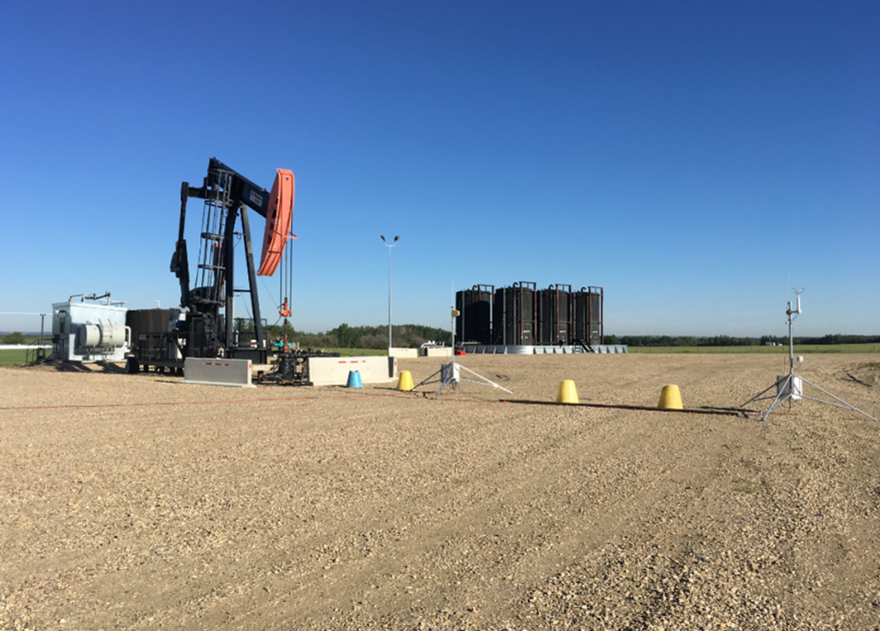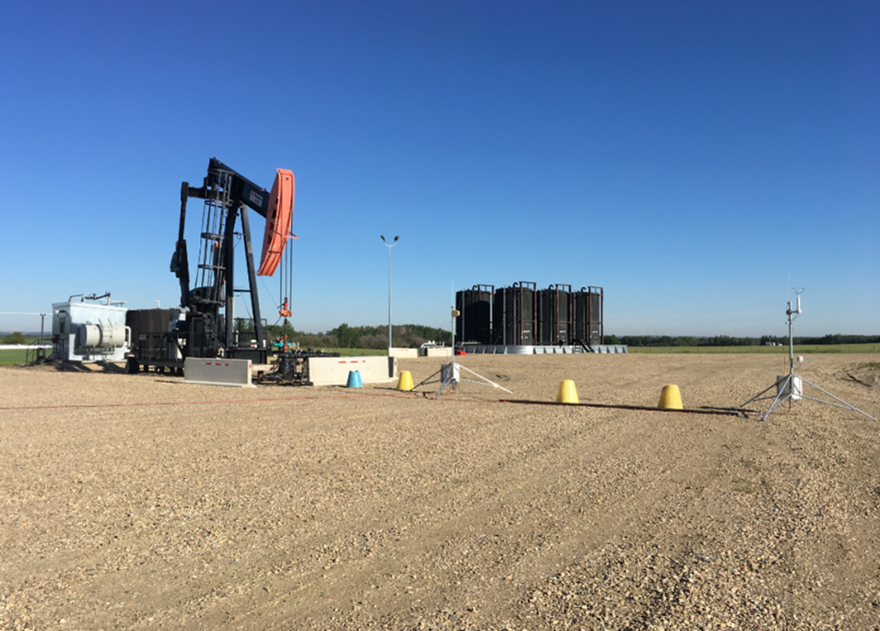Petroleum Technology Alliance of Canada (PTAC) Methane Measurements Study
Clients
Petroleum Technology Alliance of Canada (PTAC)
Methane is a potent greenhouse gas (GHG), and there is significant interest in understanding, quantifying, and reducing methane emissions from the “upstream” oil and gas (O&G) industry – the exploration and development of petroleum resources. This includes emissions from leaking or malfunctioning equipment and routine methane venting from wellhead-related equipment and operations, such as the use of pneumatic devices, glycol dehydrators, compressors, vessels, and tanks. In Canada, the Government of Alberta’s Climate Leadership Plan calls for a reduction of methane gas emissions from upstream O&G operations by 45% (relative to 2014 levels) by 2025.
<br>
PTAC funded Sonoma Technology to conduct pilot tests and analyze next-generation methane sensors to identify and quantify emissions at upstream O&G facilities. The term “next-generation” refers to emerging sensor technology with the potential to meet O&G industry needs at substantially lower costs compared to traditional methane measurement systems.
<br>
We used portable methane (Aeris Technologies’ MIRA Pico series) and meteorological sensors at a well pad near Drayton Valley in Alberta, Canada. The Drayton Valley well pad had three pump jacks with adjoining well shacks and equipment, and six production tanks. The pump jacks operated continuously during the study. The site was ideal because it had (1) confirmed methane emissions, (2) a layout that allowed for good instrument siting relative to the predominant winds, and (3) no other potential methane sources within 1.5 km.
<br>
The deployment demonstrated the utility of the package of methane and meteorological sensors by characterizing the relative strength and location of methane emissions at the site. Although methane was the primary focus of the study, the sensors also measured ethane (C<sub>2</sub>H<sub>6</sub>) to further aide the identification of potential methane sources.
<br>
Sonoma Technology scientists evaluated the sensor package before and after deployment using gases of known concentration and composition, and ran controlled release experiments prior to deployment. The experiments provided important data to evaluate sensor use in the field and emission quantification methods. We also used the data collected to complete inverse dispersion modeling to demonstrate source identification methods.
<br>
The project demonstrated the ability of these portable, next-generation sensors, and showed how sensor data could help estimate emission source strengths and locations when coupled with inverse dispersion modeling. The measurements also provided a benchmark upon which data quality objectives can be established for similar new and emerging methane sensor technologies.
<br>
PTAC funded Sonoma Technology to conduct pilot tests and analyze next-generation methane sensors to identify and quantify emissions at upstream O&G facilities. The term “next-generation” refers to emerging sensor technology with the potential to meet O&G industry needs at substantially lower costs compared to traditional methane measurement systems.
<br>
We used portable methane (Aeris Technologies’ MIRA Pico series) and meteorological sensors at a well pad near Drayton Valley in Alberta, Canada. The Drayton Valley well pad had three pump jacks with adjoining well shacks and equipment, and six production tanks. The pump jacks operated continuously during the study. The site was ideal because it had (1) confirmed methane emissions, (2) a layout that allowed for good instrument siting relative to the predominant winds, and (3) no other potential methane sources within 1.5 km.
<br>
The deployment demonstrated the utility of the package of methane and meteorological sensors by characterizing the relative strength and location of methane emissions at the site. Although methane was the primary focus of the study, the sensors also measured ethane (C<sub>2</sub>H<sub>6</sub>) to further aide the identification of potential methane sources.
<br>
Sonoma Technology scientists evaluated the sensor package before and after deployment using gases of known concentration and composition, and ran controlled release experiments prior to deployment. The experiments provided important data to evaluate sensor use in the field and emission quantification methods. We also used the data collected to complete inverse dispersion modeling to demonstrate source identification methods.
<br>
The project demonstrated the ability of these portable, next-generation sensors, and showed how sensor data could help estimate emission source strengths and locations when coupled with inverse dispersion modeling. The measurements also provided a benchmark upon which data quality objectives can be established for similar new and emerging methane sensor technologies.
Related Links:
Air Quality
Climate
Emissions
Measurements
Meteorology


Kenneth J. Craig

Kenneth
J.
Craig
Manager, Atmospheric and Emissions Modeling Group / Principal Scientist
kcraig@sonomatech.com
/sites/default/files/2023-02/KJCres.pdf
